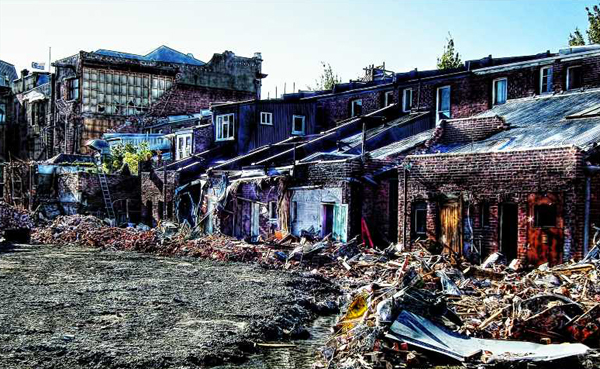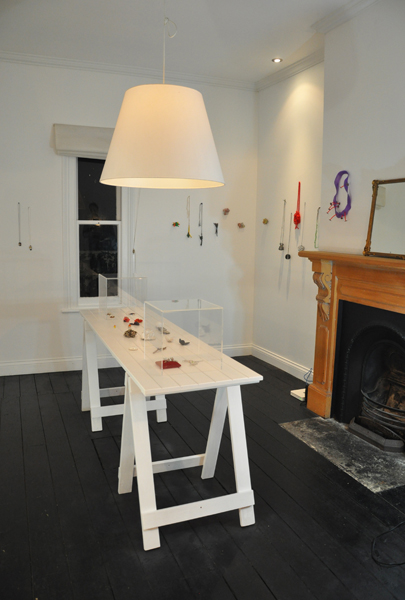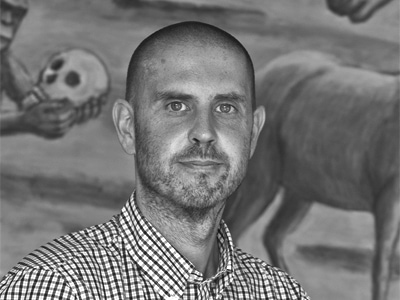
Damian Skinner: New Zealand is known as the shaky isles, but Christchurch has recently experienced more than its fair share of earthquakes. Where were you when the big one hit, and how has it affected your gallery?
Caroline Billing: Yes, more than 7000 earthquakes since last September! It was a blessing I was in the gallery when the biggest one hit and not in the street. It was a terrifying experience in the city. Eerily, at the time it struck I was looking at haunting images of Detroit’s ruins and abandoned theatres by Yves Marchand and Romain Meffre. Their work captures beauty amidst the decay, highlighting the ephemeral nature of our existence. Who would have thought only minutes later my city would resemble these very images.
The gallery’s gone. My building is one of few that remain standing in the area. The city centre has been in lock down and will take years to rebuild. It has been very challenging. But it has allowed me to think outside the (white) box, to explore alternative ways of presenting jewelry and how I can support my artists and contribute to my community and the city’s recovery. Our community has never been closer. These experiences are definitely enriching my arts practice as a gallerist.

I’ve had more time than ever to reflect on jewelry’s value and potential in the world. Initially nothing mattered except essential needs and community. Jewelry seemed so irrelevant! Yet, as the weeks went by I quickly realised that jewelry (art) could play a valuable and critical part in our recovery and I began to think about the role I could personally play.
Art can respond more quickly than architecture and infrastructure. While this is not a new thought, art’s importance and capacity to bring people together has never been more evident. At a time of disaster the human spirit needs art, not just flushing toilets. Contemporary jewelry can delight, amuse, inspire, refresh our thinking, uplift us. Jewelry’s potential for amelioration, transformation, and connecting us with the world have been highlighted through my direct experience.
How long have you been running a gallery?
I opened the gallery in 2004, so almost seven years now.
Where did your interest in contemporary jewelry come from?
My first prominent contemporary jewelry experience was a biennial exhibition that toured public galleries in New Zealand over a decade ago. This significant exhibition featured a selection of our best practising jewellers, but was never shown in my own city. Years later I worked in a gallery specialising in craft with a focus on contemporary jewelry. I was drawn to innovative materials and work that challenged conventional notions of jewelry. This sparked an interest that led me to research what was happening around the country and further beyond. I was hooked.

A young country with a colonial past, and cultural and national identity have tended to feature strongly in contemporary jewelry in New Zealand. The use of natural materials (paua, bone, shell) references our natural environment and iconography. There has been a move away from this in recent years and the influence of the European scene is much more prevalent, especially amongst emerging jeweller’s work. I’ll be most interested to reflect on this question again in five years time.
What niche do you and your gallery occupy in the contemporary jewelry eco-system?
Ecologically speaking, I’d like to think I can contribute some nutrients back into the soil! My focus is on providing a platform for solo exhibitions of jewelry (mainly New Zealand artists), to allow new bodies of work to be developed and highlighted. I still feel like a young gallerist and I’m constantly reflecting on my role, or niche, and the potential of the gallery to promote my artists and educate the public.
What are the three most interesting pieces of jewelry you’ve seen lately?
Work that has captured my attention includes: Untitled Brooch, 2010 by Attai Chen, which was selected for the AJF Geography show; Untitled, 2011 by Lisa Walker, which I included in my first post-quake Pop-up exhibition; and this brooch by Jacqui Chan, a young New Zealand jeweler, is one of sixteen created from salvaged materials after the earthquake, and is part of a project called Host A Brooch, exploring jewelry’s ability to reconnect us to our surroundings and the material ecology of the city – taking jewelry’s focus away from the self/personal.




